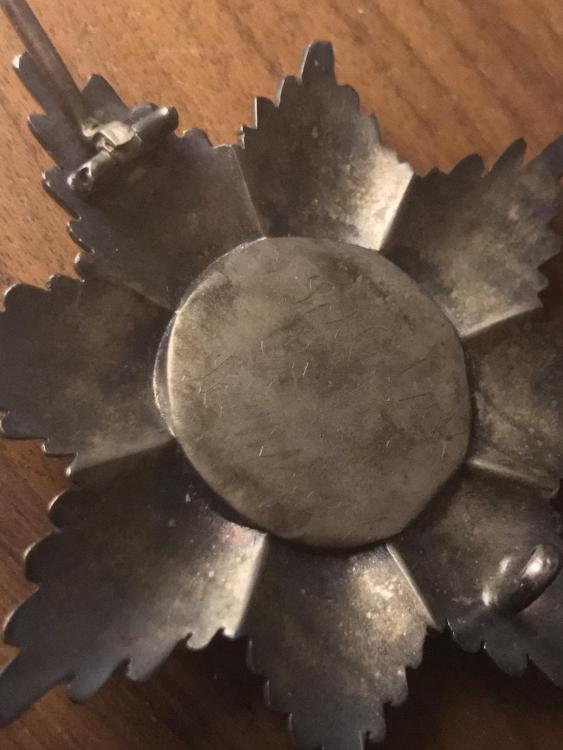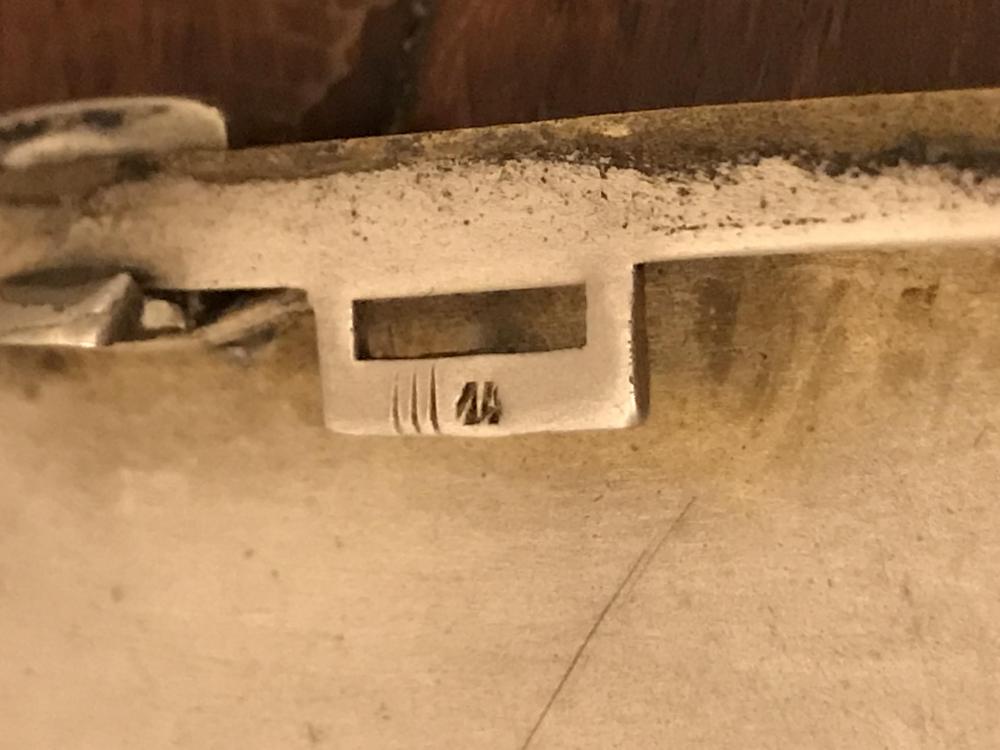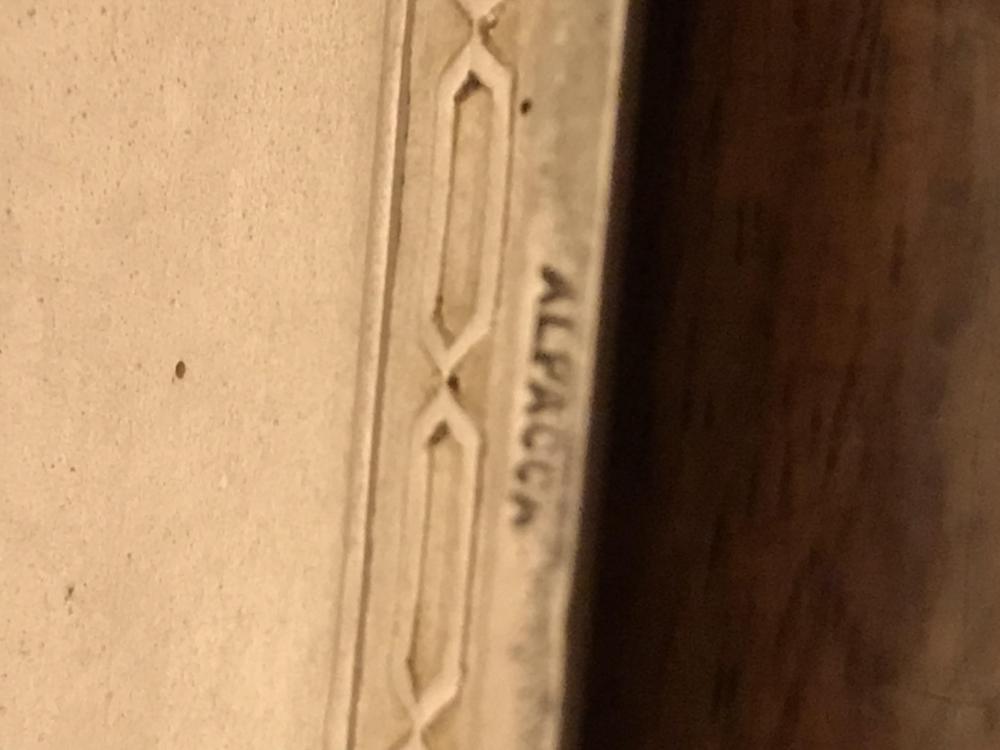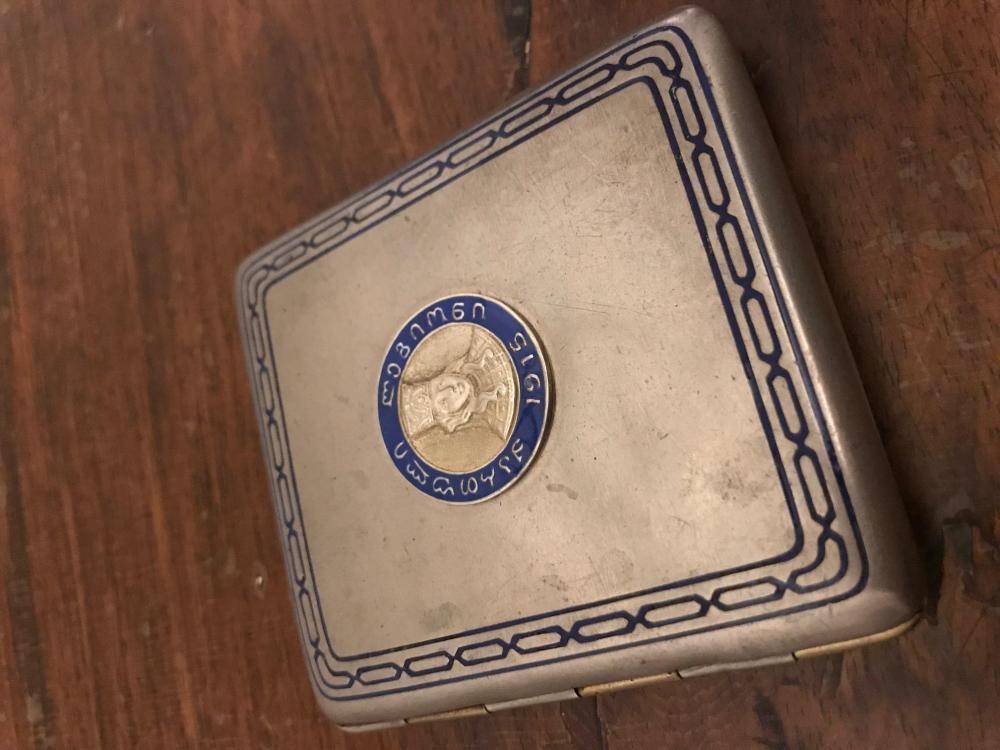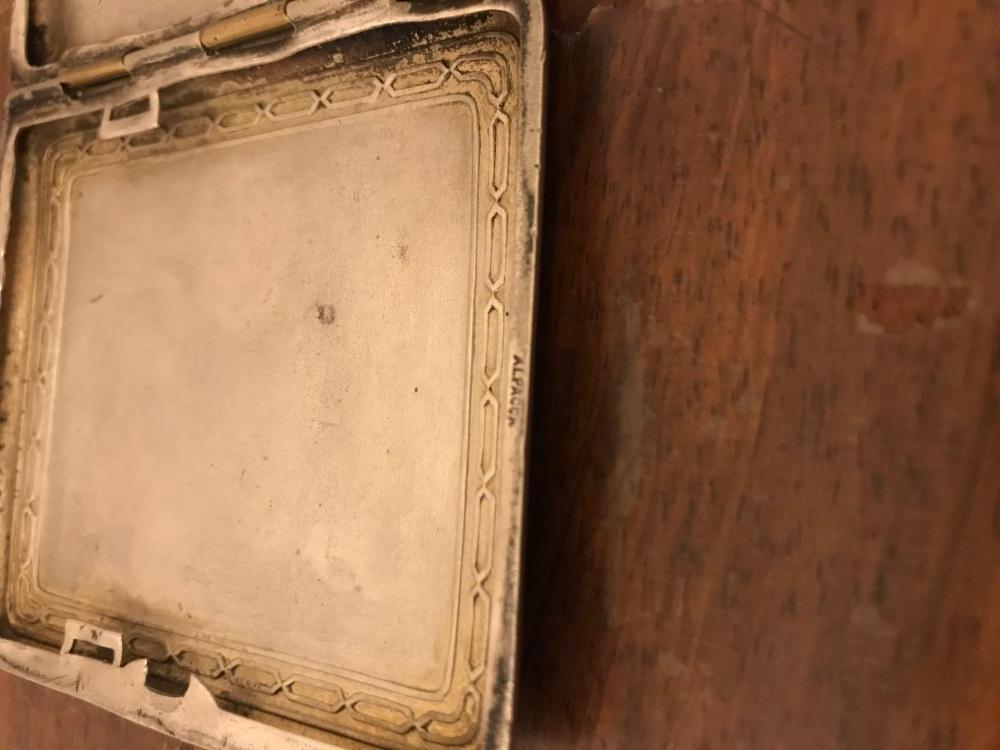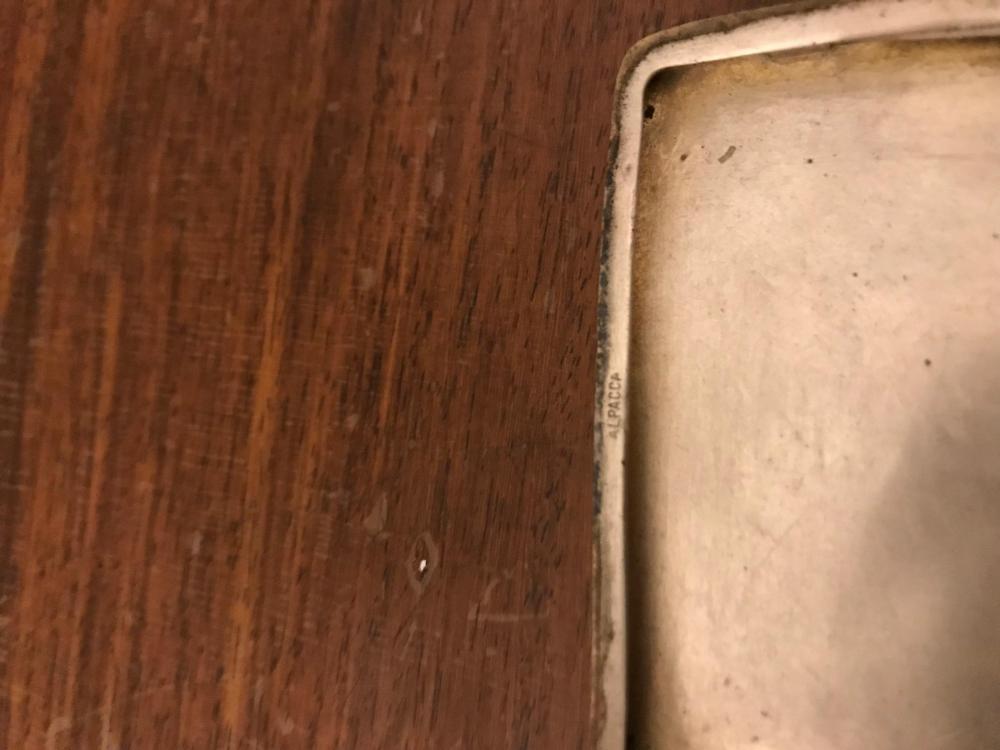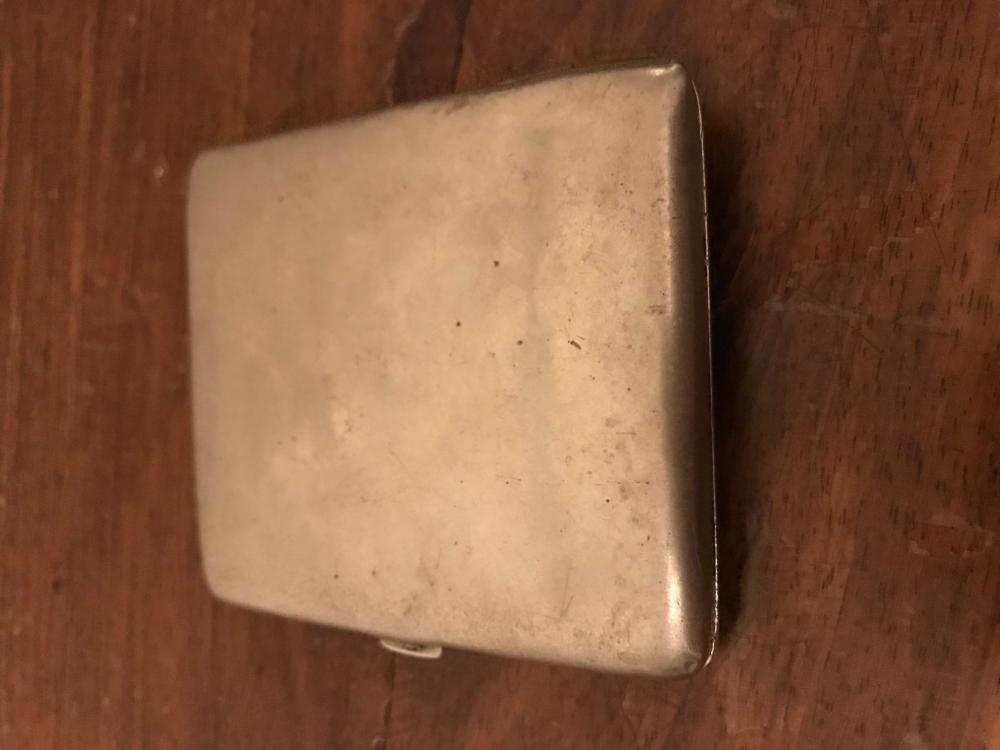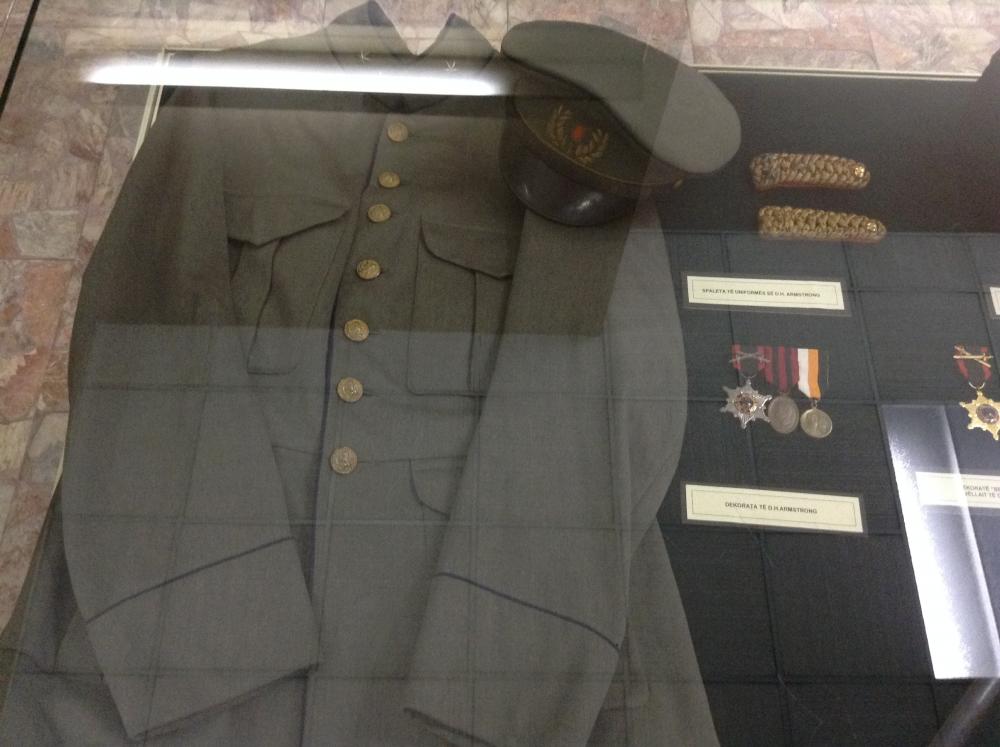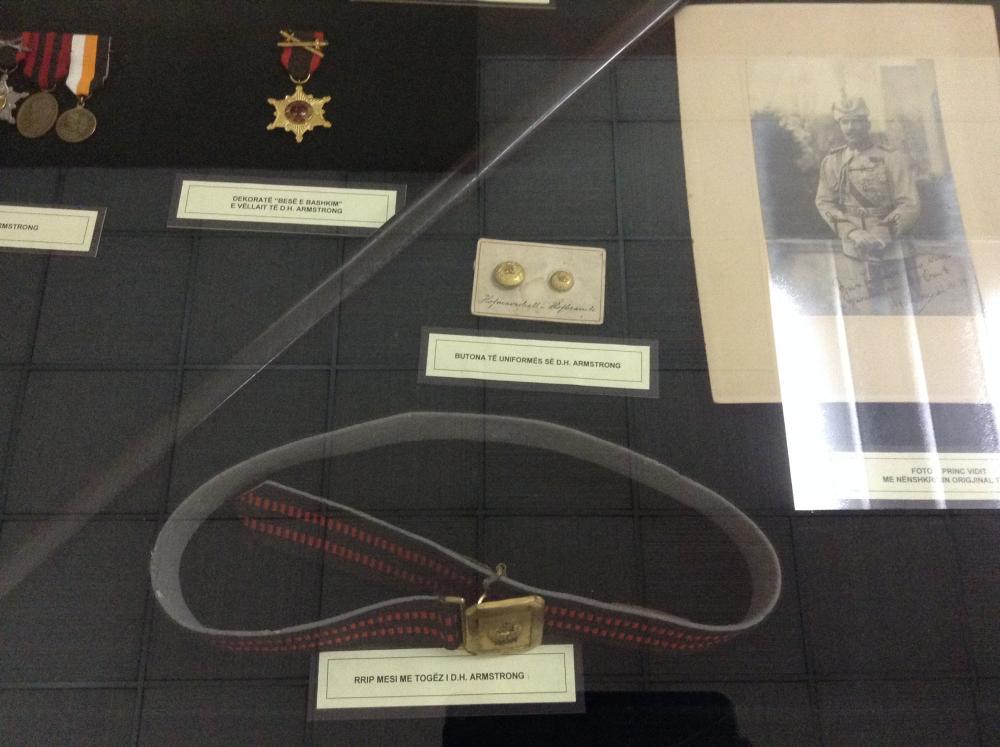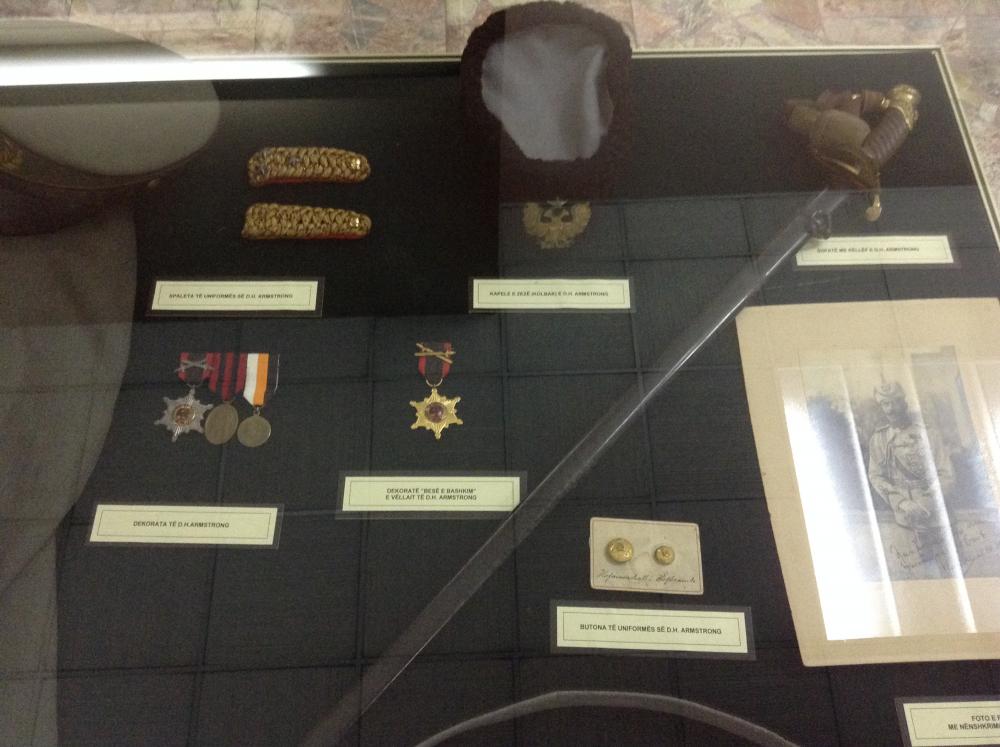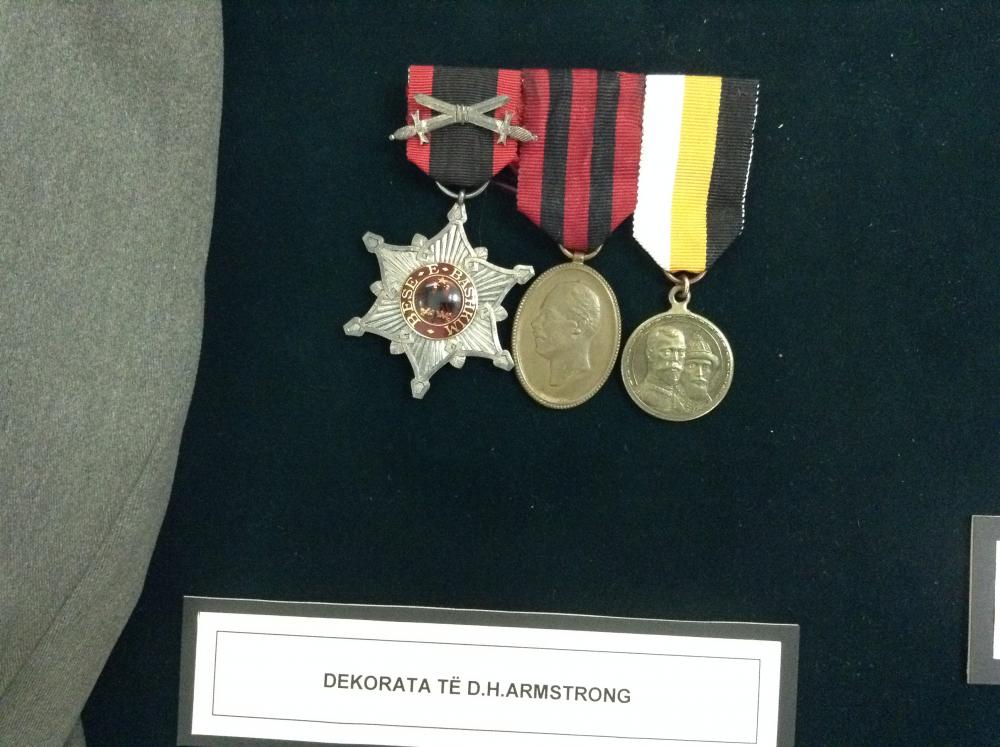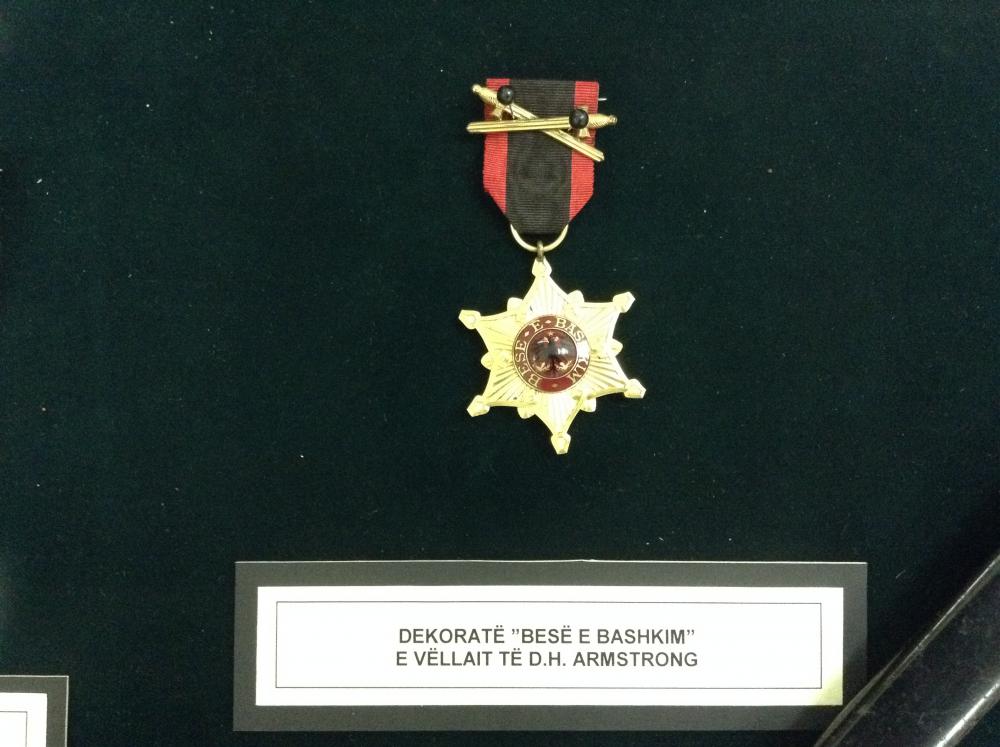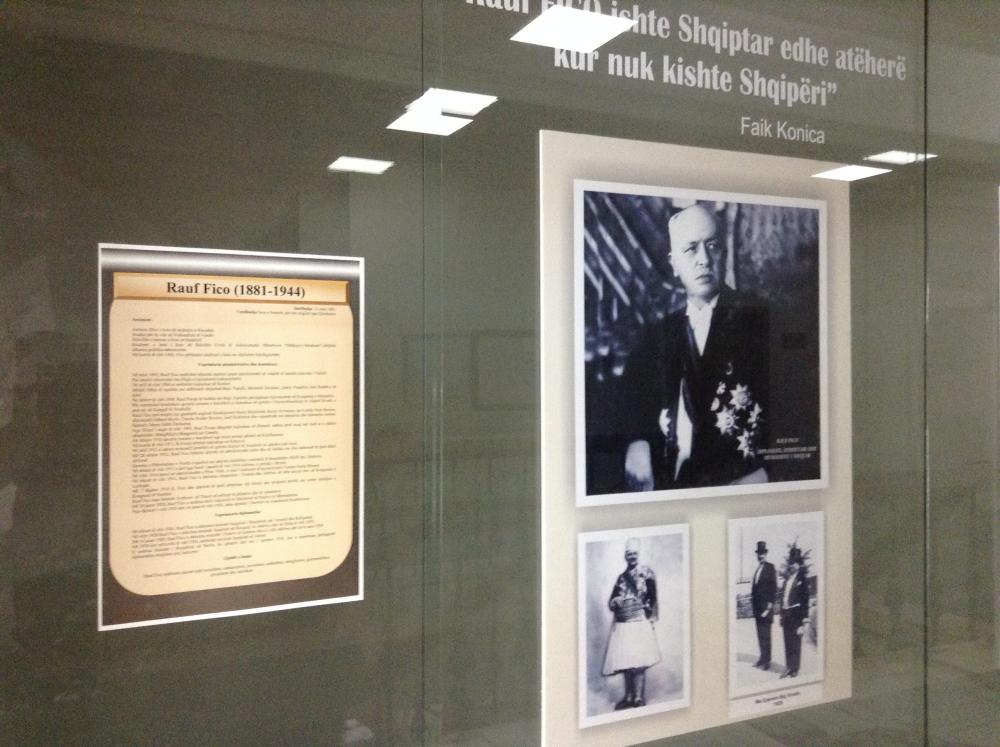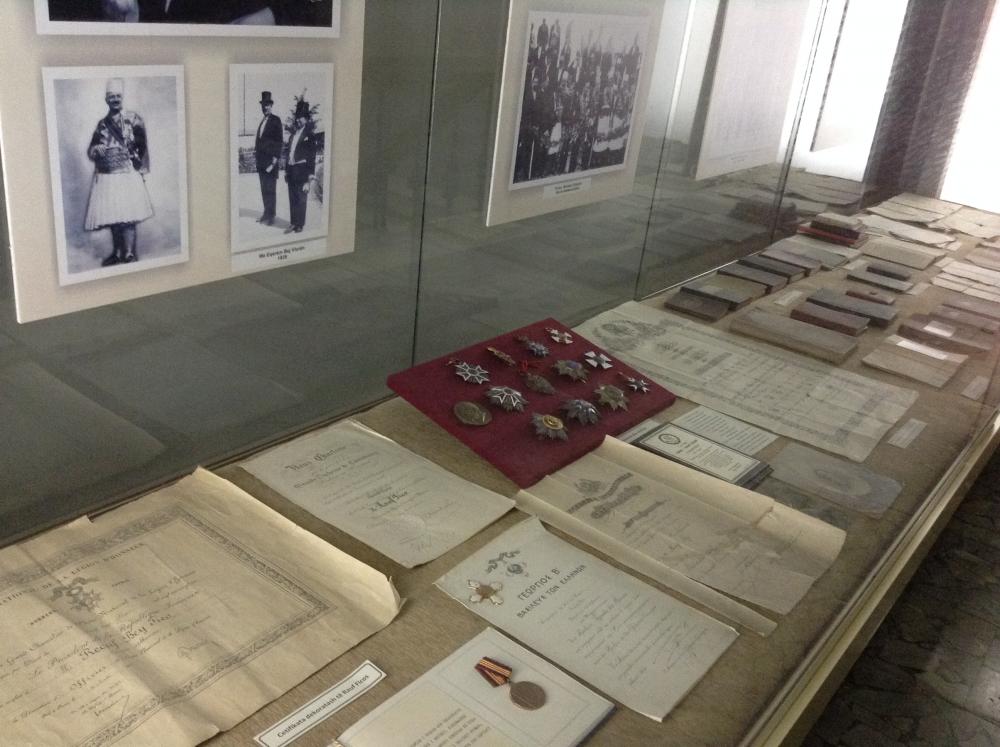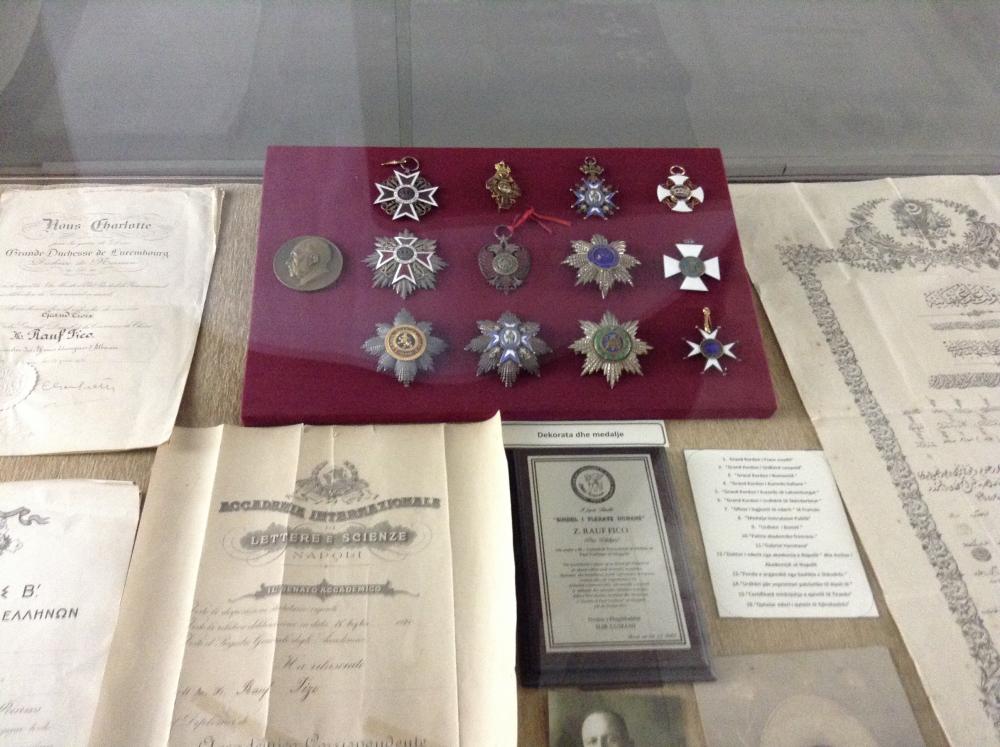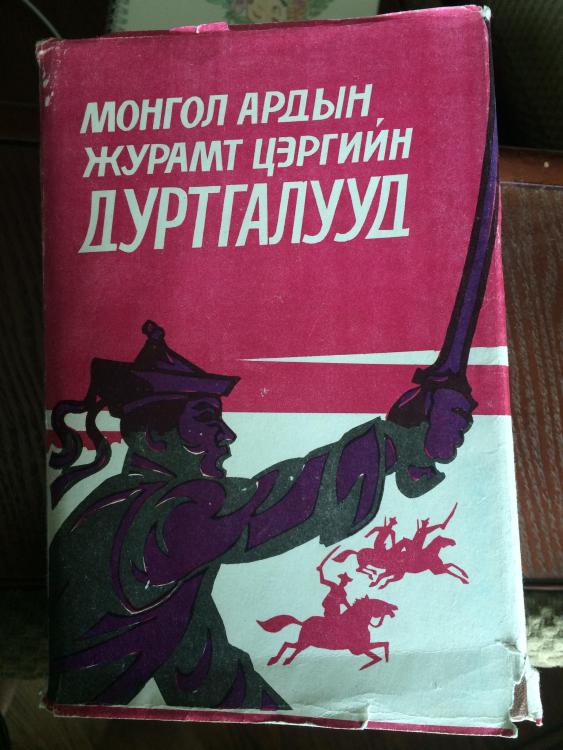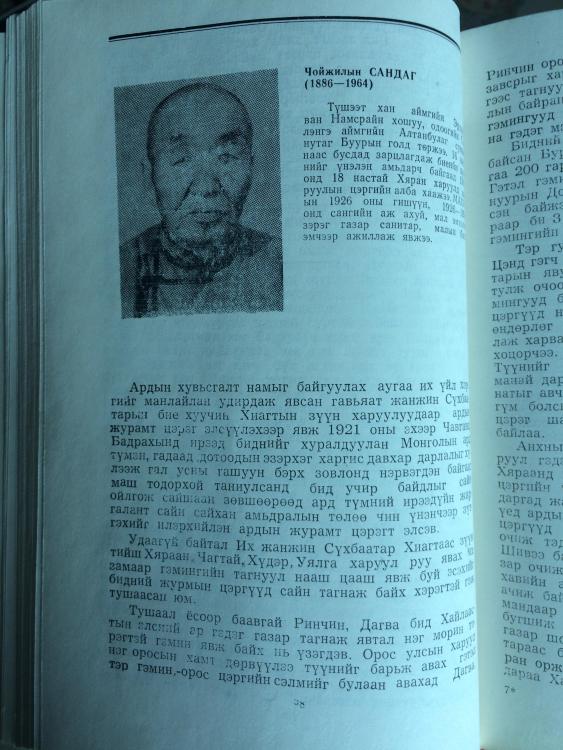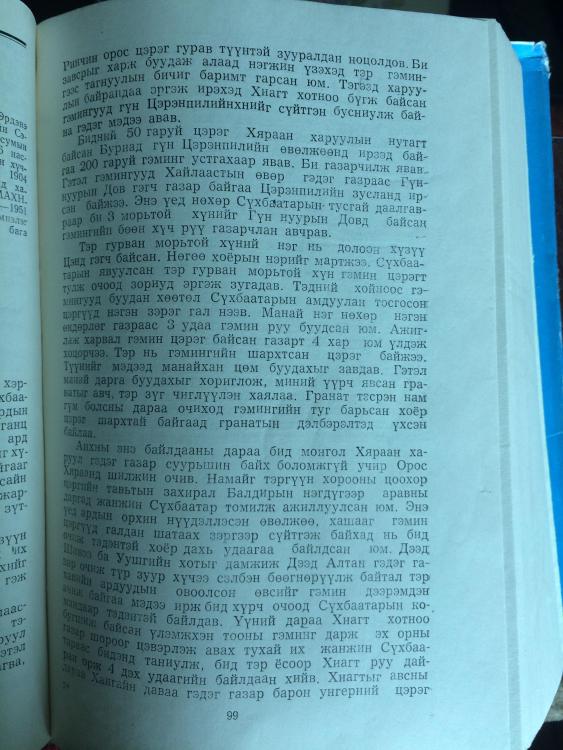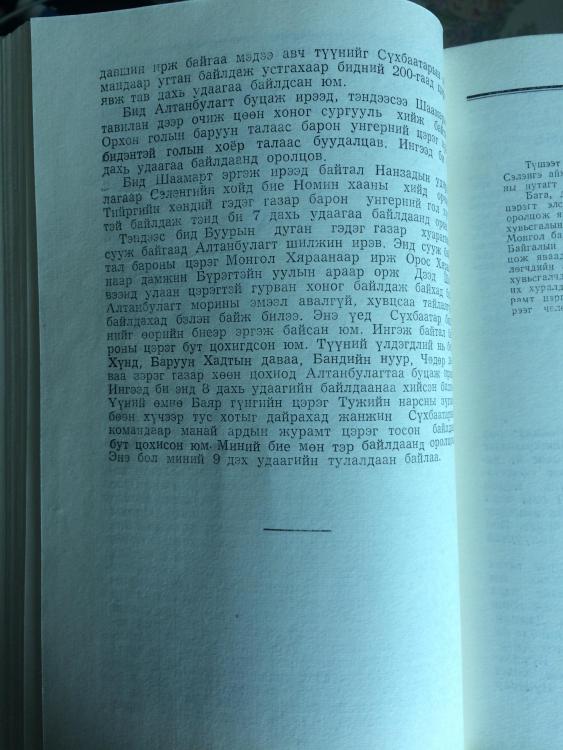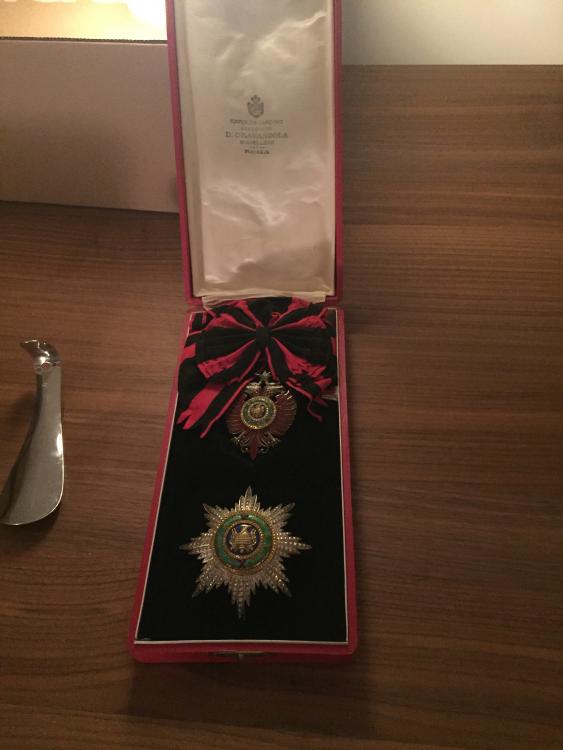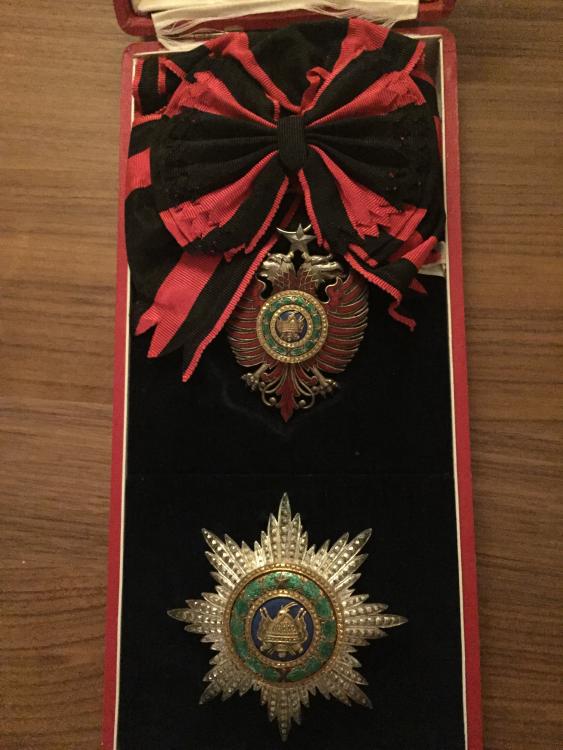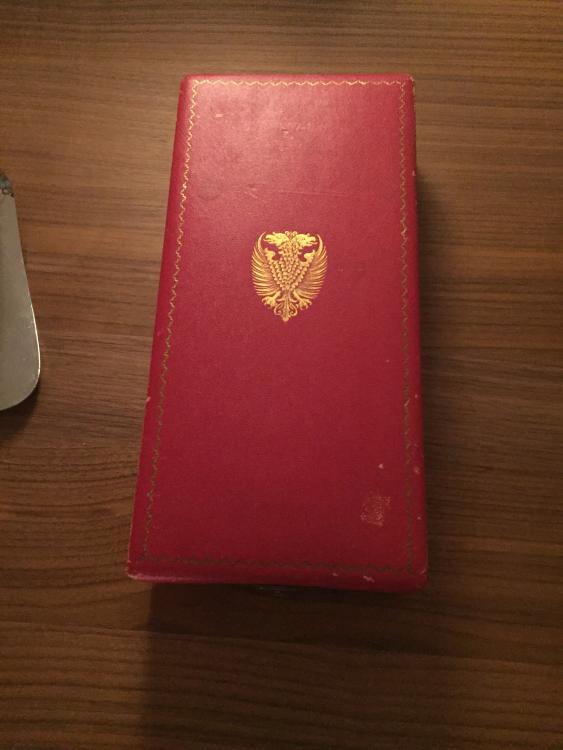-
Posts
3,879 -
Joined
-
Last visited
-
Days Won
13
Content Type
Profiles
Forums
Blogs
Gallery
Events
Store
Everything posted by Bob
-
http://gmic.co.uk/classifieds/item/403-tamara-ordersedlatzek/ No company name on the pin, perhaps a very small silver mark but difficult to be certain. I do have another Sedlatzek Tamara in my collection (based on my big excel file used to document my collection) but not at home and can't remember the details and suspect I did not post a picture here. Attached the pics of the current one.
-

Mongolia Order of Military Valour & Order of the Red Combat Banner
Bob replied to Vatjan's topic in People's Republic Mongolia
When I first started collecting the biggest fun and stress was on ebay... so many of us probably bidding against each other to try to get that type which was missing in our collection. Later moved on to more interest in the research/background of the recipient. Also miss the daily checking on whether Nota Bene had updated his site (with his great prices and friendly service!). The number of items 'missing' in my collection is fairly limited and the odds of getting these openings filled are slim (and expensive). Same with my Albanian collection. So, less busy with collecting but still fun and occasionally something new does pop up!:) -

Mongolia Order of Military Valour & Order of the Red Combat Banner
Bob replied to Vatjan's topic in People's Republic Mongolia
Interesting to see that Battushig book which startes the mongolian collecting craziness is now offered for 250 usd on ebay -
Nope, but if you are in the market to buy one there's not many alternatives...
-

Mongolia ORDER OF THE RED BANNER OF MILITARY VALOUR
Bob replied to Vatjan's topic in People's Republic Mongolia
I'm not sure if I can recall ever seeing a nr2 or nr3 -

Mongolia ORDER OF THE RED BANNER OF MILITARY VALOUR
Bob replied to Vatjan's topic in People's Republic Mongolia
-

Italy - Medals relating to Albania
Bob replied to Eric Schena's topic in Southern European & Balkan States
Thanks! -
No, was an auction years ago (in Italy I believe)
-
Still collecting but a) lots less coming on the market and b) only have a few select items missing in my collection and they are quite rare (type 1 polar, hero star, etc.). I wish Nota Bene was still dealing but that's been ages ago. Anyway, still enjoying the collecting field but more quietly (and easier on the wallet).
-
Very impressive Artan - thanks for sharing!
-
Thanks - the hunt is a large part of the fun! Interestingly enough I was just reading that the GLA was based in the Casa del Fascio building in Tirana... which nowadays is the University of Tirana main building I believe. I was just walking past it 2 weeks ago and already thought that it reminded me of some of the fascist era buildings you can find in Rome for instance.
-
Got two fascist Albanian badges in my hands now - the first one appears virtually identical to the one posted by Artan although it's much much smaller (size of my thumb). Regarding the second one: all i know is it's a badge for the GLA (the youth wing - like Hitler Jugend? - of the Albanian Fascist Party during the Italian occupation of Albania). You can even see the badge on the GLA wikipedia entry. https://en.wikipedia.org/wiki/Albanian_Lictor_Youth Regarding the first one: Beautiful and rare official badge of the Albanian Militia that was worn on the right breast pocket of his coat. The distinctive gold metal and enamels measuring 25 mm in diameter and has been produced by the "Lorioli Brothers" of Milan, as indicated by a mark printed on the rear plate along with the number "121", which indicates the production lot. On April 7, 1939 landed in Vlora contingent of black shirts of MVSN, led by General Filippo Nannini console, followed three days later by one led by Peano console. On the 12th it met aTirana the Constituent Assembly, which decided unanimously to offer Vittorio Emanuele III the crown of Albania. With Lieutenant Decree of 14 August 1939, it was formed "Fascist Militia in Albania" composed by Italian and Albanian members of the PNF or the Albanian Fascist Party. It was formed by a mountain legion of three cohorts and an ordinary legion with three cohorts. With a new decree of September 18, 1939 was transformed into "Albanian Militia" with four legions and ten permanent cohorts. The task of the Albanian Militia was to contribute to the maintenance of internal order and state security, as well as to ensure the development of the fascist revolution. The recruitment was voluntary and the soldiers were treated and graded to the agents of the public force, as well as the officers to their peers. The Albanian Militia was structured with a Legion Command Group in Tirana, entrusted to the consul general Ballabio, who will be succeeded Lieutenant General Biscancianti and finally the consul general Volante. The cohorts were located in ten locations scattered throughout the country: Tirana, diCorcia, Shkodra, Vlora, Durres, Elbassan, Cuchet, Berat, Gjirokastra and Piscopea. The MFA has participated in the campaign against Greece with the 1st and 2nd Legion CC.NN. with a budget of 177 wounded and fallen and a gold medal to the memory of the centurion Giaumarkaj Frrok Doda, a leader and tribal chief of Mirditi. At the end of hostilities with Greece, the forces of MFA were demobilized. With the expansion of the guerrillas, carried by Tito's partisans provevienti from neighboring Yugoslavia, venneo created fourteen battalions, to be used for public order, called "Volunteer Battalions of the MFA" . After the fall of the fascist regime, the MFA departments were called " Voluntary Militia Albanian" . The uniform of the Albanian soldiers was nearly identical to that of MVSN except c0pricapo shaped Albanian white fez. On the jacket, above the right breast pocket, it was worn this particular round badge with the central part bearing a black eagle biceps surmounted by a vertical fasces and the helmet of Skanderbeg, all on a red background. On the back was present vertical pin set with a round plate on which was engraved with the manufacturer's data Lorioli and the batch number. (Historical information from the article Alessandro Raspagni, published in nr. 2 June 1994 the magazine "Militaria") LAchille Starace, in the uniform of a general officer MVSN, along with some officers in Albania. The first on the left, in the uniform of a general officer of the MFA and the last on the right, wearing this badge above the right breast pocket of his coat. DeutschAfrikaansAlbanischAmharischArabischArmenischAserbaidschanischBaskischBengalischBirmanischBosnischBulgarischCebuanoChichewaChinesisch (traditionell)Chinesisch (vereinfacht)DänischEnglischEsperantoEstnischFilipinoFinnischFranzösischFriesischGalizischGeorgischGriechischGujaratiHaitianischHausaHawaiischHebräischHindiHmongIgboIndonesischIrischIsländischItalienischJapanischJavanischJiddischKannadaKasachischKatalanischKhmerKirgisischKoreanischKorsischKroatischKurdisch (Kurmandschi)LaoLateinischLettischLitauischLuxemburgischMalagasyMalayalamMalaysischMaltesischMaoriMarathiMazedonischMongolischNepalesischNiederländischNorwegischPaschtuPersischPolnischPortugiesischPunjabiRumänischRussischSamoanischSchottisch-GälischSchwedischSerbischSesothoShonaSindhiSinghalesischSlowakischSlowenischSomaliSpanischSuaheliSundanesischTadschikischTamilTeluguThailändischTschechischTürkischUkrainischUngarischUrduUsbekischVietnamesischWalisischWeißrussischXhosaYorubaZulu Powered by Google Übersetzer 01/21/2013
-
Returned from a trip to Tirana a week ago and thought I'd add some pics here - nothing new but breathing some life in this thread hopefully And here's a group belonging to Rauf Fico, an Albanian diplomat - pics also from the National Historical Museum in Tirana
-
Impressive group at an impressive price!
-
Here's another Partisan badge with booklet and research that just arrived. It appears, from his memoirs, that he was a border guard soldier under the Bogdkhaan rule and joined the Sukhbaatar's partisan movement. His bio is from the Partisan's biographies series of books (consisting of 3 books). Choijilyn Sandag (1886-1964) He was born at Baruun Gol of Altanbulag county of Selenge province formerly known as Erdenevan Namsrai’s county of Tusheetkhaan province. He has been engaged in manual labor since the age of 16 until he was drafted to military service in 1904. He is a member of MPRP since 1926. From 1926-1951, comrade Sandag worked as a veterinary at the local government agricultural unit. Our Great Revolutionary leader Sukhbaatar called border guards of Border checkpoints located to the east of Khiagt town to enlist his Revolutionary guard early 1921. He met us, border guard soldiers, at the camp of Chavgants Badrah and explained the current political and military situation. We accepted his call and enrolled his troops for the cause of creating bright and happy future for our Mongolian people. Later, commander Sukhbaatar ordered me to go on a scout mission along the road that leads to border checkpoints at Khyaran, Chagtai, Huder and Uyalga (to the east of Khiagt town). The purpose of the mission was to find out possible movements of Chinese scout groups there. Comrades Rinchin, Dagva and I went on this mission. Near the Mongol-Russian border, we located a Chinese soldier travelling on a horse -drawn cart. Prior to that, we met with a Russian border guard and four of us attempted to apprehend the Chinese soldier. The Chinese soldier snatched the sabre of the Russian border guard and hence, two of my comrades rushed to overpower the Chinese soldier. As soon as there was a moment for me to shoot, I shot the Chinese and we searched his body. We found some documents and papers and took them back to HQ. Subsequently, we received the information that the Chinese soldiers pillaging the family camp of Count Tserenpil. The revolutionary unit of 50 soldiers including me, then stationed at Khyaran border checkpoint, moved to the winter camp of Buraid Count Tserenpil in order to expel and terminate the 200 Chinese soldiers. I showed the road to the unit as I was well familiar with the territory. Before reaching the Count Tserenpil’s camp at a place Gun Nuur Dov, Sukhbaatar ordered me to take three soldiers and scout their positions. I recall that one of the soldiers was comrade Tsend and I forgot the names of the other two. We approached the camp on our horses and skirmished with the Chinese there. After that four of us pretended as running for our lives from the Chinese and lured their unit to the positions of Sukhbaatar’s unit. We joined the rest of the unit. One of my comrades positioned close to me made several shots and we saw four wounded Chinese soldiers in the distance. Everyone around me attempted to shoot them. However, one of our commanders ordered not to shoot. He took my hand grenade and threw it to the Chinese soldiers. After a blast, everything calmed down. We ran towards the Chinese and took two wounded Chinese holding flags as prisoners. The rest of the Chinese were already dead. The remaining Chinese troops retreated. After the first battle with Chinese, our unit had to move to the Russian side of the border. There I was promoted by Sukhbaatar. I became a commander of ten soldiers in fifty-man unit of commander Baldyr. At the time, we encountered and terminated a group of Chinese soldiers pillaging winter camps of herders. Our unit moved to a place named Deed Altan where we regrouped our forces. We received a message that the Chinese soldiers are confiscating hay from local herders. Our unit reached the place and forced the Chinese to flee. After this mission, Commander Sukhbaatar ordered our unit to join the Revolutionary forces for liberating the Khyagt town. We joined the battle for Khyagt and liberated the town from the Chinese. That was my fourth combat encounter with Chinese occupants. After liberation of Khyagt, our unit of 200 soldiers under leadership of Sukhbaatar moved to fight the forces of Russian Baron Ungern that were approaching Khangain Davaa. We fought the Ungern’s units there too. After this battle, we retreated to Altanbulag and practiced for several days at Shaamar Tavilan place. We skirmished with units of Baron Ungern on the banks of Orkhon river. After that, we moved back to Shaamar but were immediately summoned under Nanzad’s command to the valley of Tiirg at the Nomonkhan monastery. There we joined other Revolutionary units to fight the main forces of Baron Ungern. This was my seventh combat action. Later, we were stationed at Buuryn Dugan and subsequently moved to Altanbulag. There we were at around-the-clock readiness to join Red Army and other Mongolian Revolutionary units in their main battle to defeat Baron Ungern’s forces that were retreating to the north east. Sukhbaatar occasionally visited our unit then. We were glad to hear that Baron Ungern’s main forces were defeated. Our unit also took part in small scale missions to eliminate the remnants of the Ungern’s forces scattered along the Khund, Chudur and Baruun Hadat passes and along the shores of Bandi lake. This was my 8th time in action. Finally, I took part in the battle to defend Altanbulag from the Mongolian troops of Count Bayar who was an ally of Ungern. The main battle took place in Tuj trees and we have won this battle under the command of Sukhbaatar. This was my 9th combat mission.
-
Not in my possession but the links should be interesting enough https://www.dnw.co.uk/auction-archive/lot-archive/lot.php?department=Medals&lot_id=106874 https://www.dnw.co.uk/auction-archive/lot-archive/lot.php?department=Medals&lot_id=243747 https://www.dnw.co.uk/auction-archive/lot-archive/lot.php?department=Medals&lot_id=244933
-

Italy - Medals relating to Albania
Bob replied to Eric Schena's topic in Southern European & Balkan States
Document for a Skanderbeg Order Commander’s Cross, 3rd Class, 1st Type, instituted in 1925. Awarding document dated 19th of May 1941 to an Italian Colonel with the name of Mario Stampacchia These documents for pre-Communist Albanian awards or rare and sometimes very beautiful. Will need to spend some time to research this Colonel. If anybody could help with translating the document and/or identifying the signatures at the bottom of it, this would be highly appreciated! -
Just in: Albanian Order of Scanderbeg Grand Officer set from the era of King Zog Grand Officer's Set, 2nd Class, 1st Type, instituted in 1925. Neck Badge, 73x53 mm, gilt Silver, obverse enameled, obverse central medallions gilt silver, enameled, maker's mark "Ditta Cravanzola, Roma", original suspension ring and ribbon. Breast Star, 85 mm, Silver with brilliant cut rays, central medallion gilt silver, enameled, reverse with vertical thin pin, maker's mark "E. Gardino – Cravanzola, Roma", in original damaged case of issue by "Cravanzola, Roma" with Albanian double headed eagle on the lid. Marriage Medal of Prince Leka (2016) - 32 mm, Silvered, maker’s mark "W", original suspension ring and ribbon with suspension bar. Very rare medal, awarded only to the guests of the Royal mariage, mint state! To note, I was (unfortunately) not a guest!
-
http://sinonk.com/2016/01/08/chests-full-of-brass-a-dprk-political-history-in-orders-medals-prizes-and-titles/ Interesting article
-
Didn't find another appropriate thread to put this in so figured I'd add it here. Albanian Order of Scanderbeg Grand Cross set from the era of King Zog - I was quite impressed by it! No document unfortunately... I had acquired a documented set from the same auction house some time ago but they managed to lose the (beautiful!) document so had to cancel the sale. Somebody somewhere will now potentially be lucky with that document at home...





